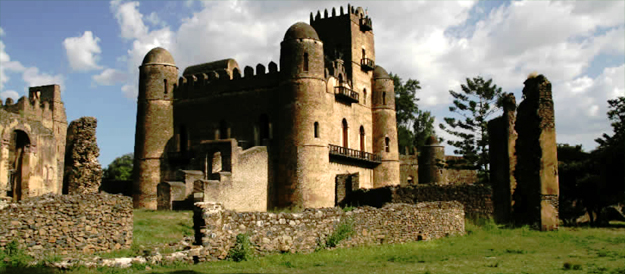10 reasons making Ethiopia your next destination
- The horn of Africa wing Ethiopia imbeds cross-cultural civilizations from North Africa, Sub-Saharan Africa and the Middle East offering a lot more for history buffs amongst others. Gifted with unique historical wonders and enjoyable hosptiality Ethiopia joined jovago.com offering adventurous exploration opprtunties. Ethiopia’s landscape and admirable weather conditions makes it quite attractive. The four streams of the Blue Nile creates a magnificent wonder. Lake Tana, the source of Blue Nile River which meets the White Nile River in neighboring Sudan supplying 85% of water to Great Nile River forms an attractive spectacle in the land of Ethiopia. The view of the river’s powerful waterfalls leaves traveller with a timeless experience.
- Ethiopia is home of stunning nature’s creations taking you into incredible adventures. Its northeastern part is one of the few places on earth where a volcano becomes a fire seafloor. The hottest Danakil depression is 125 meters below sea level. The molten rock of lava bubbles up to the surface creating Fire Lake. The 613 meter-high volcano was discovered in 1960 as one of the world’s active persistent lava lakes. The view of this fire lake makes you feel like you are standing on another planet. According to scientists, this active volcano named Erta Ale is expected to slowly split the African continent forming an ocean in the future. Dallol, one of the lowest points on African continent at 116 meter below sea level is also part of Afar. Dallol features an extreme version of hot desert climate overheating all year around. The white and yellow color sparkling salt peaks of the place generates bringt and unique experience.
- The high altitude of Ethiopian lands (Simien and Bale Mountains) constitutes 70% of African mountains being one of the finest places in the world for climbers. The mountains as high as 4,620 meters above sea level are full of life even at its top, indigenous people and wild animals live far from the rest of the world. The mountains provide a fresh cold breath giving a sensation that you are on top of the world.
- The ancient architectures of the country portrayed at Lalibela, Gondar castles and churches hewn from gigantic rocks tells a lot about the Ethiopian ancient civilization and society. Lalibela is one of the registered global heritages with eleven rock hewn churches carved from within the earth. The rock cut architecture was built in early 13th century during the regime of King Lalibela. It’s constructed from a single rock without any stone or cement input. The rock is kept in its natural appearance except to some of the walls and the roofs drawings.
- Aksum – another world heritage of monolithic monuments dates back to 300-500 AD. It is made from a single piece of granite stone standing as high as 82 feet. The obelisks resemble buildings with intricately carved cross-shaped windows, and rows of long ends dividing each story. It also has a door although it does not lead to inside of the monuments. This second largest obelisk was taken by Mussolini’s troops in 1937 during Italian occupation of Ethiopia. The monument stood for decades in the Piazza Di Porta Capena in Rome. It was returned back to Ethiopia in 2005 shipped from Italy in a plane in three separate pieces costing close to 8 million dollars. The obelisk shipment was described as the heaviest and the largest structure ever transported by air.
- The southern parts of the country (Omo Valley) offer rich cultural and magnificent natural features. These people are mostly nomadic pastoralists with their own language and unique lifestyle. Their public ceremonies, dances, traditionally designed leather clothings and dishes can give anyone an exceptional and unforgettable adventure. The southern and south-western regions also encompass quite a lot of national parks with numerous endemic species of animals . In such parks, you will be given rare access to see animals up-close.
- Teff, the Ethiopian highly nutritious grain and super food comes from a tiny round soft flatbread that flourishes in the highlands of Ethiopia. The gluten-free nutritious grain packs calcium, protein, amino acids, iron and vitamin C. Eaten with a fistful of more than 25 spicy cultural stews, it gives a delightful experience of Ethiopian dish.
- Home to more than 80 ethnic groups, Ethiopia combines traditional music, dances and off-the-dome poetry (azmri) particularly made for each guest. The variety takes the great company and different cultural dancing styles to a unique level
- Coffee is an integral part of Ethiopian life. An invitation to attend the cultural coffee ceremony is considered a sign of friendship and respect. The long involved process starts with traditional apparatus being arranged upon a bed of long scented grasses. The roasting and boiling is done over a small charcoal stove finally served with traditional ceramic cups called Sinny .
- Ethiopia is the safest place where you can freely travel without worrying about security precautions. Policemen ensure the town’s security providing information and offering help with no strings attached. People who are used to hosting foreigners are very hospitable and warm making you feel at home.
Source: blog.jovago.com




